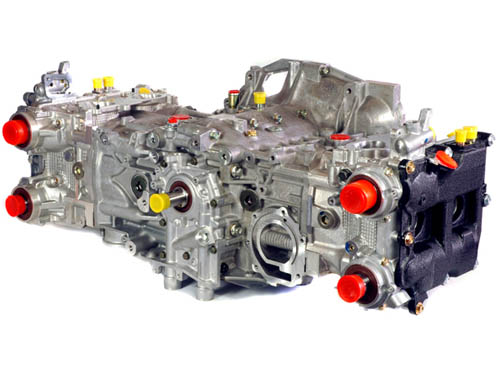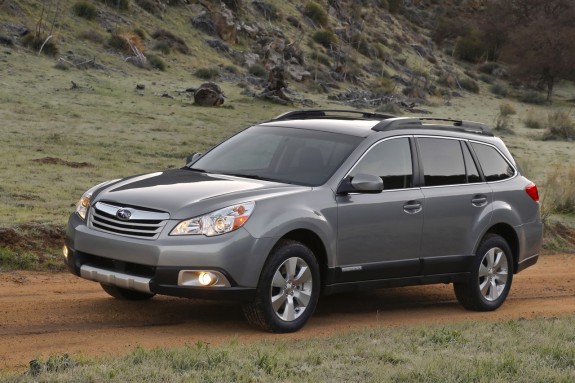Stupid Technology: Boxer engines

Subaru has a long reputation of being a quirky, niche vehicle. Their philosophy is simple, and it consists of AWD and boxer engines in all their vehicles. The standard AWD has helped crown Subaru as the national car of Colorado, but the boxer engine hasn’t helped to define the brand much. Boxer engines (ie. horizontally-opposed engines) are simply engines with horizontal cylinders that face away from each other. This makes them exceptionally low compared to traditional inline and Vee engines that are prevalent in industry. By concentrating the weight down low, the boxer engine lowers the center of gravity of the car, and is said to improve handling. However, the boxer engine also has trade-offs that may be acceptable in a Porsche (who also use boxers), but just serve to complicate the life of a Subaru owner. Read on to find out why I would hate to own one of these!
See, there are reasons why the inline and Vee engine have become the standard in the automotive industry. Sure, there have been VR and W layouts, but they never really catch on. In all cases, it’s because they’re more complicated with negligible gains. When you have engineers worldwide working on improving just a couple layouts, the lone companies that use boxers are left to fend for themselves, with very few engineers between them. So while these engineers can use the physical benefits of a boxer, such as inherently smooth operation compared to other designs, they still end up losing out in many aspects. A recent example of this is the famed 2.0L boxer-4 in the Toyota RWD sports coupe, also known as the Scion FR-S and Subaru BR-Z. While the boxer helps it to achieve great handling, the 2.0L puts out only 200HP after years of development work. That’s a complete slap in the face when compared to Honda engines of the past decade. Even the plain, $20,000 Civic Si had a 2.0L inline-4 with 200HP by 2006 – 7 years earlier! Similar innovation problems exist across the Subaru lineup, where engines that are rushed to market might not be up to snuff (also see: banjo bolt issue in 2.5L turbo boxer-4 engines, causing turbo or total engine failure).
But the lack of knowledge doesn’t stop when the car leaves the factory. Since boxer engines are rare (only Subaru uses them out of all the non-supercar manufacturers), maintenance can be a pain too. Sure, oil and air filter changes are basically the same. But what about changing the spark plugs, timing belts, or valve adjustments? Even if you can find a competent mechanic willing to work on a boxer engine, it can still cost you an arm and a leg. A coworker paid over $1000 to have the valves adjusted on her Subaru, because the entire engine needed to be pulled out to do the job. That wouldn’t be so hard to swallow for a Porsche 911 owner, but for a simple Impreza or Forester driver, that’s a lot of time and money. The same job can be done on a normal inline-4 in under an hour, in anyone’s driveway.
Then the question becomes, why should you bother with something that is such a potential maintenance nightmare? The answer is that you shouldn’t. Subaru’s choice to use AWD on their vehicles (except the BR-Z) essentially eliminates the benefit of a boxer engine. When people buy AWD vehicles, they tend to want extra ground clearance. Thus, Subaru has built a brand around raised Outback versions of their Impreza and Legacy. So what they did was, they lowered the center of gravity and then decided to make the car higher than necessary, and saddle it with the extra weight of an AWD system. The consumer ends up with a car that has no special handling characteristics – not that wagons typically need great handling to sell in large quantities – yet requires thousands of extra dollars in maintenance a few years down the road.
Of course, if you test drive a Subaru and find something that you like about it, by all means you should buy a Subaru. My coworker owns her Subaru because she wanted a stick shift and she had to have a certain amount of room for her dogs. Her Subaru was the only candidate that fit the bill, so the $1000 valve adjustment was worth it for her. But let’s be honest: if Subaru switched to inline-4′s tomorrow, the only people who would cry are a few fanboys and the sales department of competing brands. Being able to use Toyota’s engines (who owns part of Subaru’s parent company, Fuji Heavy Industries) would do wonders for Subaru sales numbers, and they should consider such a move.
Engine layout photo courtesy of Raymond Sutanto via Wikipedia



